Have you been thinking about running Daily 5 in your upper primary classroom? Not sure where to start?
I was in this exact same position a few years ago! I had heard amazing things about Daily 5 from colleagues working in the lower grades, but when I tried to source activities for my Year 5 class, I really struggled to find anything suitable.
So, after doing extensive reading and research, I created my own Daily 5 resources that I have used (and LOVED) ever since!
But, before I share how Daily 5 operates in my classroom, it's important to understand the philosophies that underpin the framework!
About The Daily 5
The Daily 5 framework was developed by experienced educators and sisters, Gail Boushey and Joan Moser.
In their 2006 book The Daily 5, Boushey and Moser reflected on current research as well as their own classroom experience, to develop a framework that "eliminated busy work, developed student independence, increased engagement, and accelerated growth."
Together they created the Daily 5, which consists of the following tasks:
- Read to self
- Work on writing
- Read to someone
- Word work
- Listen to reading
Boushey and Moser believe that in order to maximise the effectiveness of these tasks, each must be introduced separately and explicitly with what they call the 10 Steps to Teaching and Learning Independence.
In the framework shown below, tasks are modelled, practiced, reflected on, and revised until the behaviours become a habit.

As students develop independent work habits, teachers are able conduct small group and one-on-one conferences.
While these 10 steps outline a highly structured method for building independence and reading stamina, the Daily 5 framework is built on the belief that "highly effective classrooms are student driven, and allow for student choice."
Teachers are encouraged to allow students choice in the material they use during the literacy block, as well as the tasks they engage in and the order in which they engage in them.
The Daily 5 and Your School Context
One of the many benefits of the Daily 5 framework, is that it can be implemented in conjunction with any curriculum or whole-school focus - for instance The Super Six Comprehension Strategies.
As a busy Year 5 teacher back in 2018, I loved that the Daily 5 framework helped me structure my literacy block for maximum effect, but gave me the ability to teach reading comprehension, spelling and writing in the way my school required.
Getting Set Up
Boushey and Moser believe that children are more engaged, motivated, and successful when they have choice.
Therefore before introducing The Daily 5, teachers will not only need to source a range of authentic texts, but also explicitly teach students how to choose books that are at an appropriate level.
The sisters use the acronym i-pick:
I choose a good book - Look it over inside and out
Purpose - Why do I want to read it?
Interest - Does this interest me?
Comprehend - Do I understand what I am reading?
Know the words - Do I know most of the words?
When students know how to pick a "good fit" book, and are given the freedom to select texts based on interest, they are much more engaged and reading ability improves.
Where to Begin?
Now that your classroom is stocked with a range of authentic books and students have been taught how to select appropriate texts, you are ready to introduce Read to Self.
Boushey and Moser recommend launching Daily 5 with Read to Self, because by simply allowing students the time and space to read, you foster a love of reading, but also build much needed stamina.
Depending on the class and age group, this launch phase may take a number of weeks. It's important not to rush and introduce new Daily 5 tasks before students are able to read and work independently for sustained periods of time, remembering that the eventual aim is for teachers to use these sessions to confer with small groups and individuals.
When students become restless or it is apparent they have reached their limit, regroup and reflect as per the 10 Steps to Teaching and Learning Independence.
Be assured that when first introducing Read to Self, many classes only complete a few minutes of independent reading at a time. Provided students have access to engaging and appropriate texts, their stamina will improve, it just takes time!
Don't forget to keep a record of the class' reading stamina, celebrate success and watch it grow day by day!
All Together Now
Once Read to Self is well established in your classroom and students are able to enjoy reading for sustained periods with minimal distraction, the other elements of Daily 5 can be introduced, one at a time.
Like Read to Self, all other activities should be introduced using the 10 Steps to Teaching and Learning Independence framework.
As with Read to Self, Boushey and Moser encourage teachers to offer choice when it comes to the other Daily 5 elements. This will look different in every classroom, and perhaps even year to year depending on the students in one's class.
Keep reading to see how I structure Daily 5 in my classroom, offering choice but also maintaining high expectations and accountability.

Lesson Ideas!
So now you know how to introduce Daily 5, build reading stamina and foster independent work habits. You've thought about how you'll source interesting and engaging texts for your students to read, as well as dreamed up all the things you'd love to do in your small group and one-on-one conferences once students are on task. But then you remember you also need to organise said tasks!
If you're stuck for ideas, you are in the right place! Below is a break down of all the tasks I use for each element of Daily 5!

As all the schools I worked at used the Super Six Strategies for Comprehension, I created a set of matching task cards that could be used for any fiction text.
The cards cover the following strategies:
- Predicting
- Make Connections
- Summarising
- Visualising
- Monitoring
- Questioning
These task cards allow for 2 elements of choice. First, students can choose the text they read. Second, students can choose which of the questions they answer for the prescribed strategy.
For example, if my explicit / whole class reading lessons focused on making connections, this would be the same focus for Daily 5.
In my Super Six Comprehension Pack, questions can be displayed as a PowerPoint on your IWB, printed as task cards that can be glued into student books, or printed in A4 size and laminated for repeated use.

During Daily 5, Work on Writing tasks are often follow up activities that allow students to practise skills learnt during explicit writing lessons. As a result, I timetable my writing lessons on a Monday morning, before I launch Daily 5 for the week.
While students work independently during Daily 5, I confer with groups and individual students about their writing, helping them to set and monitor personal goals. This formative assessment then allows me to program writing lessons for the weeks ahead.
As with all my other Daily 5 resources, my Work on Writing templates are designed to be life-long resources that require little to no prep.
In the pack I have included 20 printable and digital photo prompts with success criteria for each writing purpose (entertain, persuade, inform), as well as planning and publishing templates.

Once Read to Self is well established in your classroom, and students have built enough stamina to read continuously for sustained periods, Boushey and Moser recommend introducing Read to Someone.
During Read to Someone, students choose a place to read, sit EEKK (elbow to elbow, knee to knee), alternate reading, and check for understanding with their partner.
For Read to Someone, I like to assign levelled texts, as although student choice is a cornerstone of the Daily 5 Framework, I believe there is still a place for this.
In grouping students according to ability and assigning a text for them, I am able to expose them to texts they might not otherwise read, and set literature circle roles so that students can participate in robust discussions about a shared text.
My literature circle templates can be used for any imaginative text!
How to set this up in your classroom:
1. Form groups based on differentiated needs or reading interests
2. Assign a role to each student (after explicitly teaching each one)
• Discussion Director
• Connector
• Word Wizard
• Plot Profiler
• Illustrator
3. Students read an assigned passage/chapter with a partner, taking turns to read a paragraph or page each
4. Students complete their activity sheet independently.
5. Students participate in a literature circle discussion (20-30 minutes), sharing their ideas, questions and answers
6. Students self assess using the checklist provided

According to Boushey and Moser, Word Work is an opportunity for students to experiment with spelling patterns, memorise high-frequency words, and develop a curiosity for and interest in new and unique words.
In my classroom, Word Work tasks are follow up activities that allow students to practise the spelling patterns learnt during explicit lessons. As a result, I timetable my first spelling lesson on a Monday morning, before I launch Daily 5 for the week.
As with all my other Daily 5 resources, my Word Work task cards and PowerPoints are designed to be life-long resources that require no prep.
Activities can be used with any spelling list!
Level 1:
- Remember
- Understand
Level 2:
- Apply
- Analyse
Level 3:
- Evaluate
- Create

According to Boushey and Moser, Listen to Reading provides fluency models that are valuable to all ages, but especially to inexperienced readers, those whose listening comprehension exceeds their reading level, and those learning English.
While Listen to Reading requires a greater level of organisation in terms of sourcing listening devices, students benefit greatly from hearing texts otherwise inaccessible, either due to their reading ability or the lack of a physical copy in their classroom.
In the past, sourcing texts to listen to was often challenging. However, with the advent of podcasts and a number of free audiobook websites, teachers now have more choice than ever!
Kid-friendly audiobook websites (fiction)
- Lit2Go
- ReadWorks
- Storyline Online
- Starfall
- Stories to Grow By with Whootie Owl
- Speakaboos
- Story Time from Space
- Storynory
Kid- friendly Podcasts (non-fiction)
As with all my other Daily 5 resources, my Listen to Reading task cards and PowerPoints are designed to be life-long resources that require no prep.
Based on Bloom’s Taxonomy, the set of task cards foster critical and creative thinking skills through highly engaging questions and activities.
By dividing the activities into 6 levels – remember, understand, apply, analyse, evaluate and create - teachers can easily differentiate and assign tasks that are rigorous and challenging for all.
Level 1:
- Remember
- Understand
Level 2:
- Apply
- Analyse
Level 3:
- Evaluate
- Create

Putting it Together!
One of the things I am asked most often about Daily 5 is how many times per week I do the activities and for how long.
As the name suggests, it is recommended that Daily 5 is done every day. As for the length of time, this will depend greatly on your student's reading stamina. At first, when you have only introduced Read to Self, Daily 5 may only take 10-20 minutes per day. Whereas after all the Daily 5 activities have been introduced, and students have built solid work habits, Daily 5 may go for more than 90 minutes.
In my classroom, students have 4 Daily 5 sessions to complete all activities, though can complete them in any order they choose. On the last day of the week, I set aside time for students to finish off any incomplete tasks and also have their literature circle discussions with their group.
Below are 2 sample timetables you may find helpful.
Example 1 - Whole class overview
Use this template if you want to set the same tasks for all students in your class (with the exception of the Read to Someone texts and literature circle roles which are differentiated)

Example 2 - Differentiated group overview
Use this template if you want to differentiate all aspects of your Daily 5 timetable. Students in each group may complete different levels or amounts of work.

If this template or any of the other resources I've shared interest you, check out my MEGA bundle of Daily 5 products.
Buying as a bundle will save you 20%
Looking for more Daily 5 activities? I have these too!
Work on Writing
- Recount Tri-fold Pack
- Book Review Tri-fold
- Figurative Language Task Cards
- Figurative Language in Literature
- Direct Speech Task Cards
- Direct Speech in Literature
Word Work
Listen to Reading
Poster Set
I hope this blog post has answered all your questions and helped you become more confident in launching Daily 5 in your upper primary classroom.
If you'd like to know more about how I use Daily 5, please leave a comment below.
I also recommend checking out The Daily 5 book, and website for yourself!
Jess x

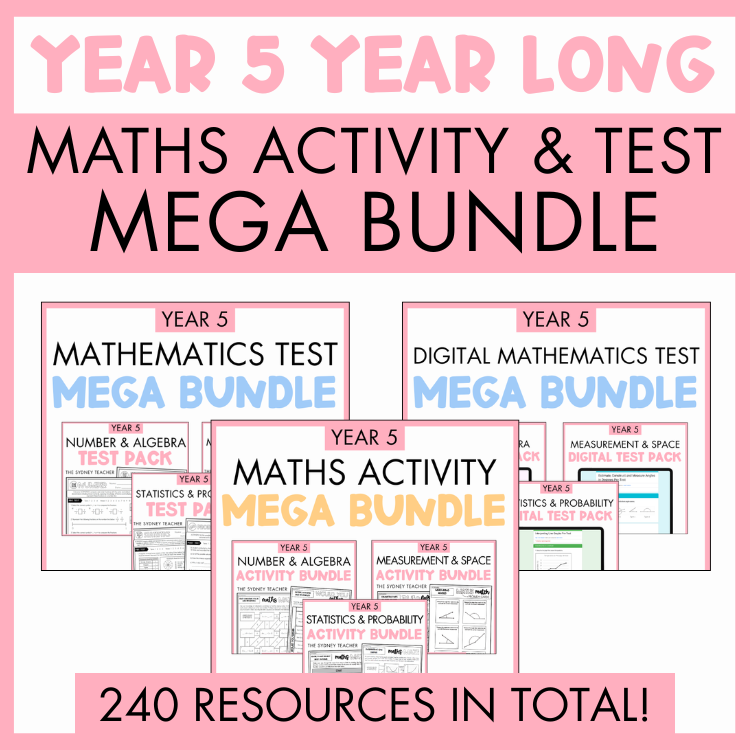
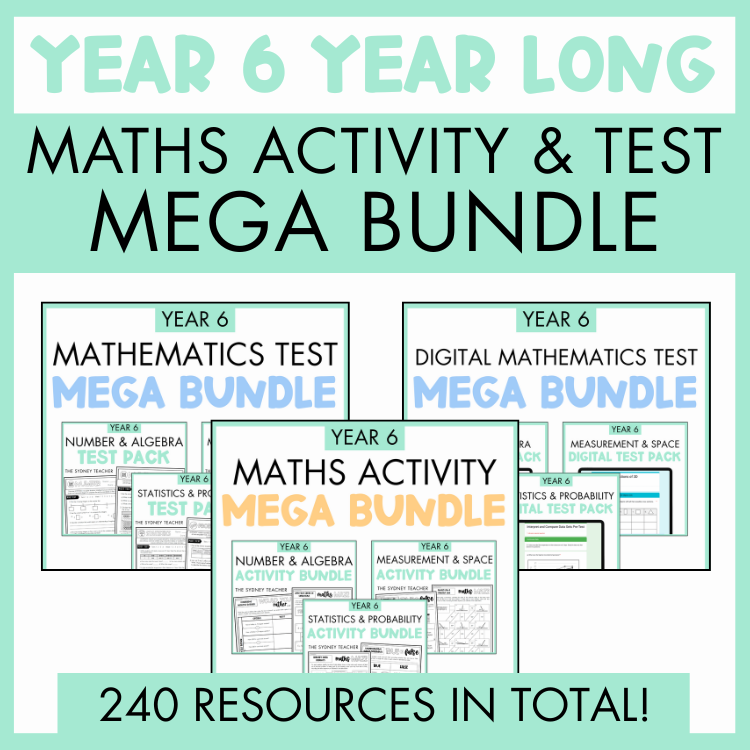
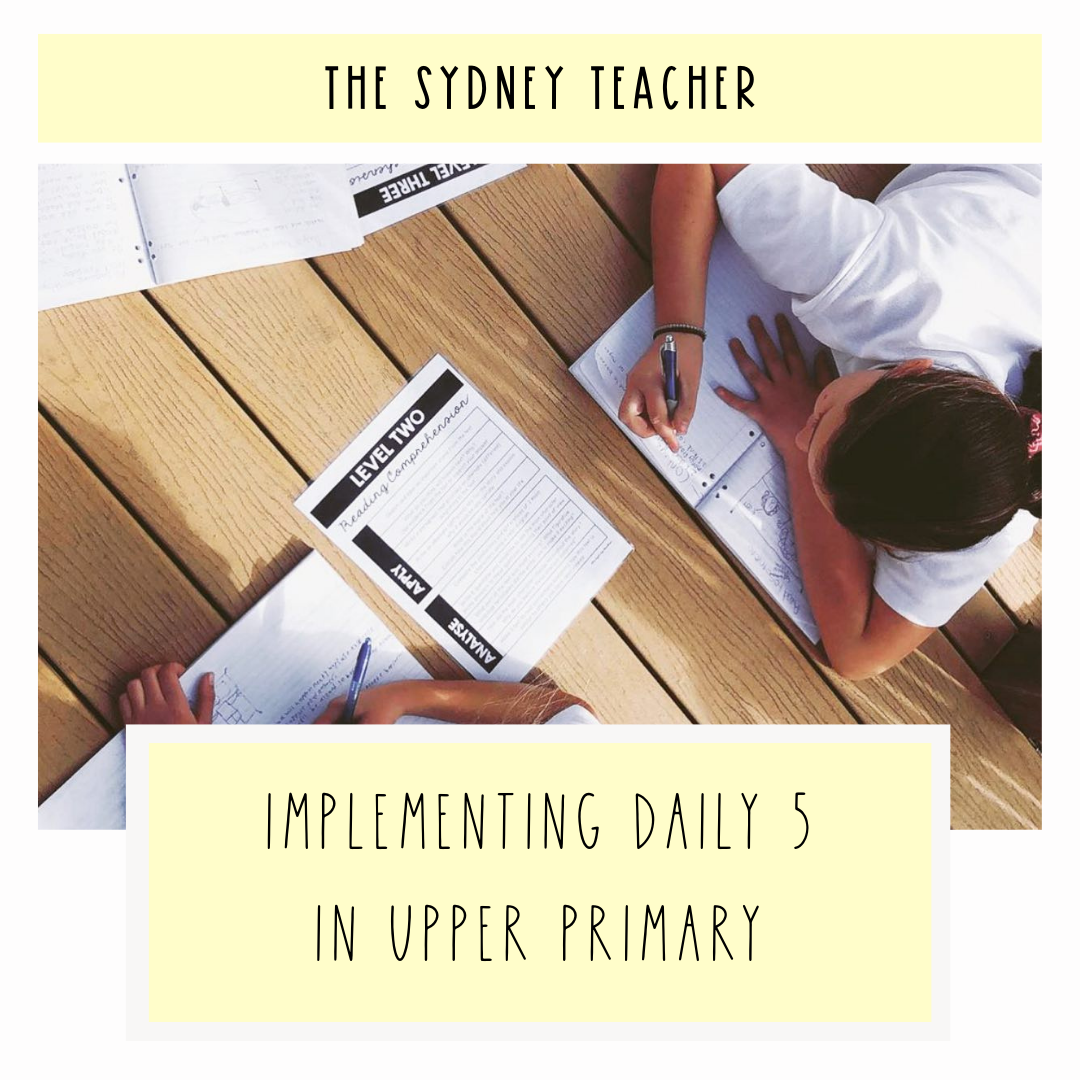
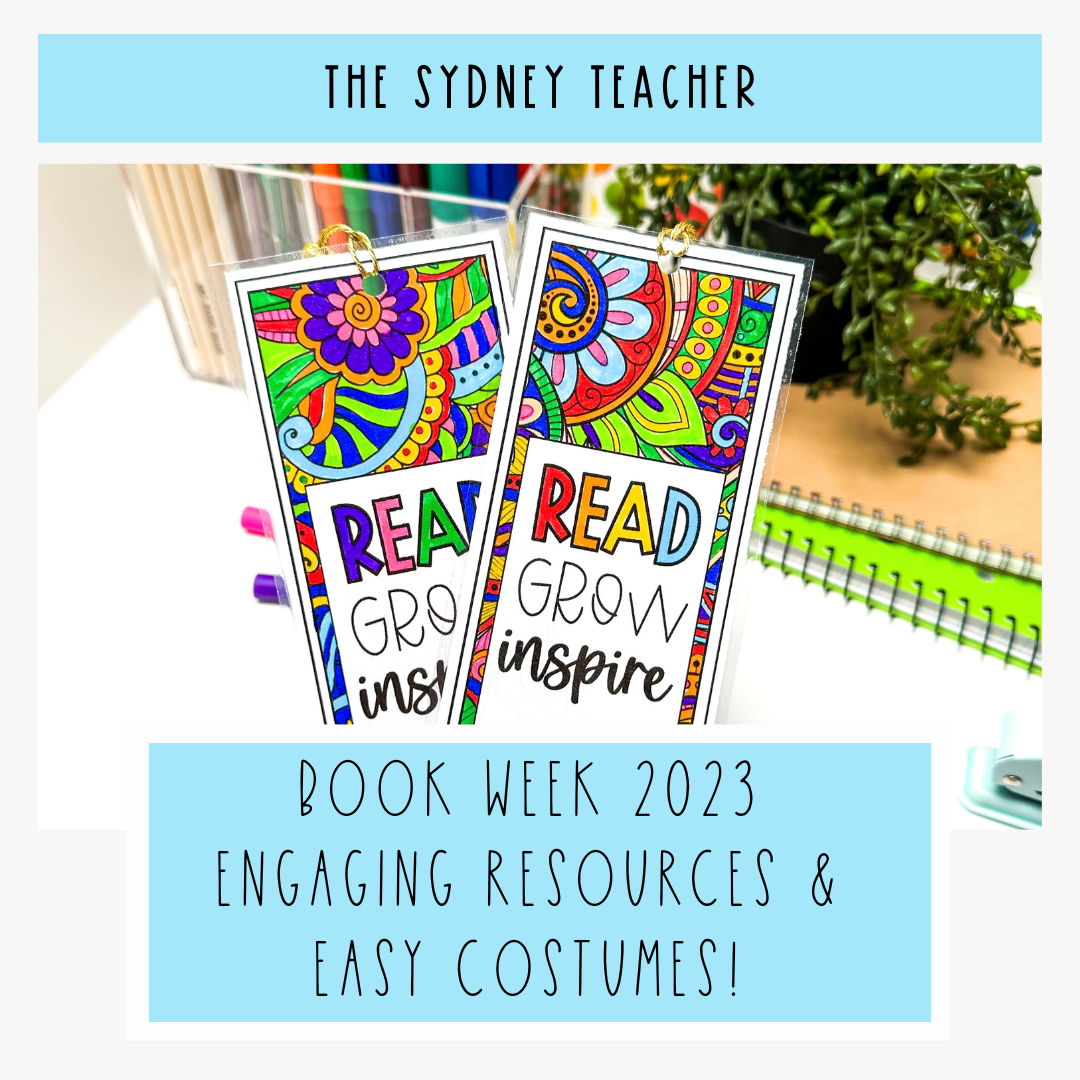
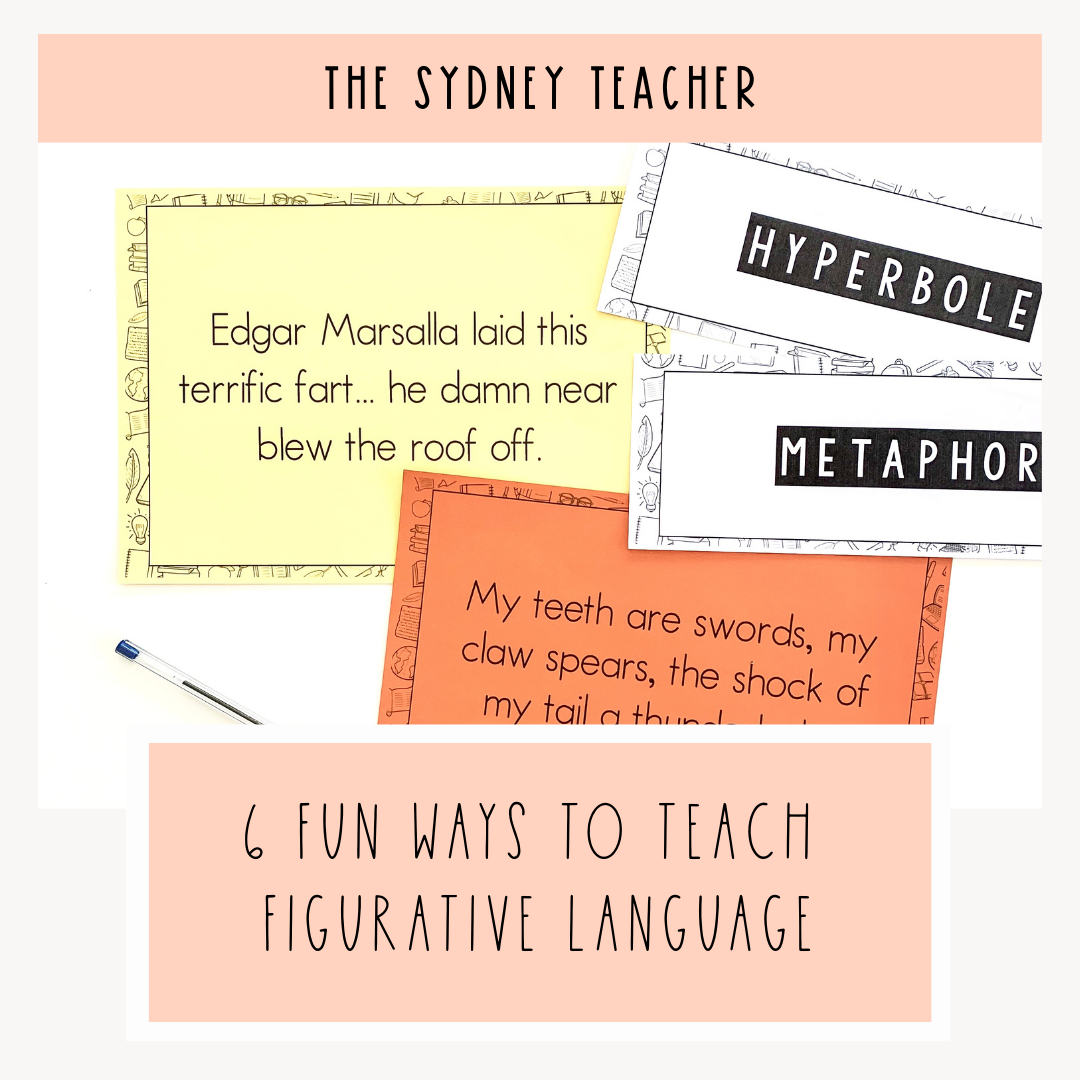
1 comment
MissNix
Hi! I love Daily 5 and the resources you have created to support – thank you :)
Your timetable examples are really helpful but I wondered if you would mind sharing in more detail how this is covered over the week? Do you do this every day or are all the activities spread over the week?
On the back of this, I also wondered, how do you fit everything in?! I read that you introduce spelling AND do your writing lesson on a Monday and it would be so useful if you could share how your week looks. I hope that’s not too much to ask.
Thanks again for creating such wonderful resources!
Hi! I love Daily 5 and the resources you have created to support – thank you :)
Your timetable examples are really helpful but I wondered if you would mind sharing in more detail how this is covered over the week? Do you do this every day or are all the activities spread over the week?
On the back of this, I also wondered, how do you fit everything in?! I read that you introduce spelling AND do your writing lesson on a Monday and it would be so useful if you could share how your week looks. I hope that’s not too much to ask.
Thanks again for creating such wonderful resources!